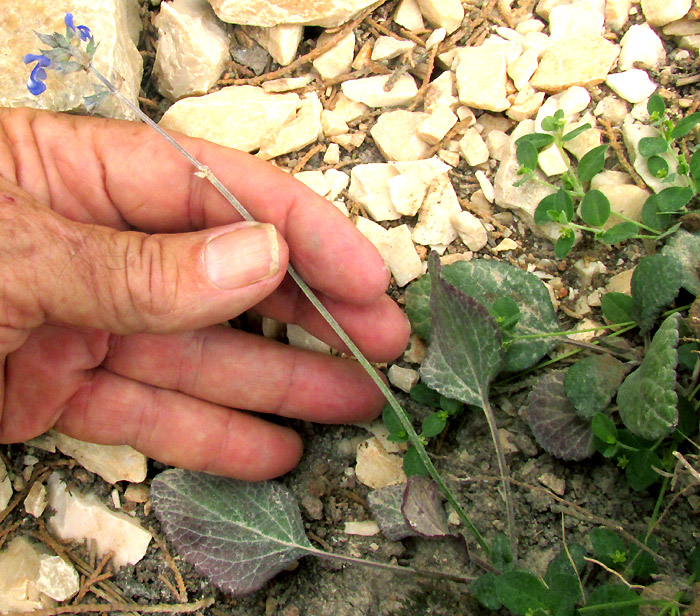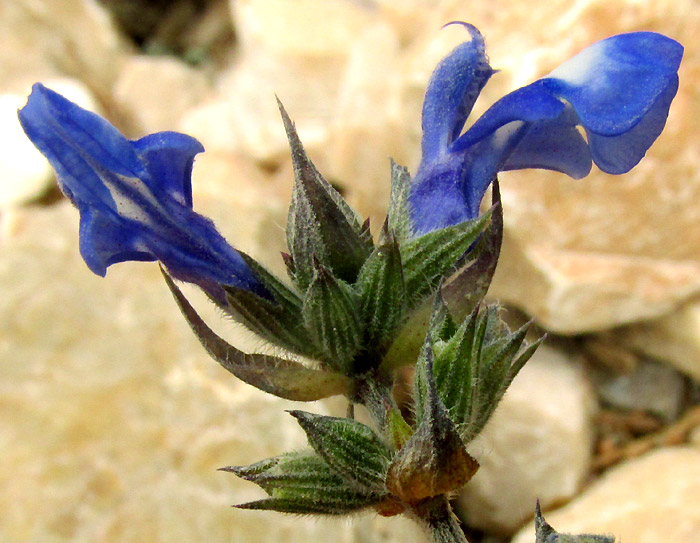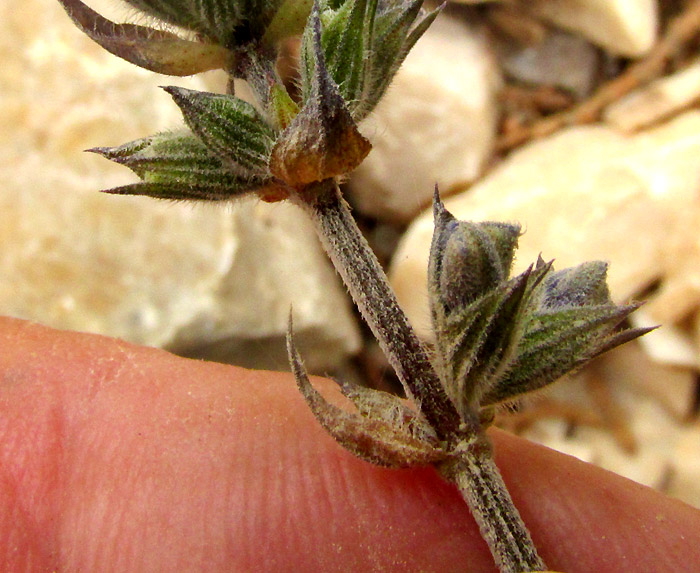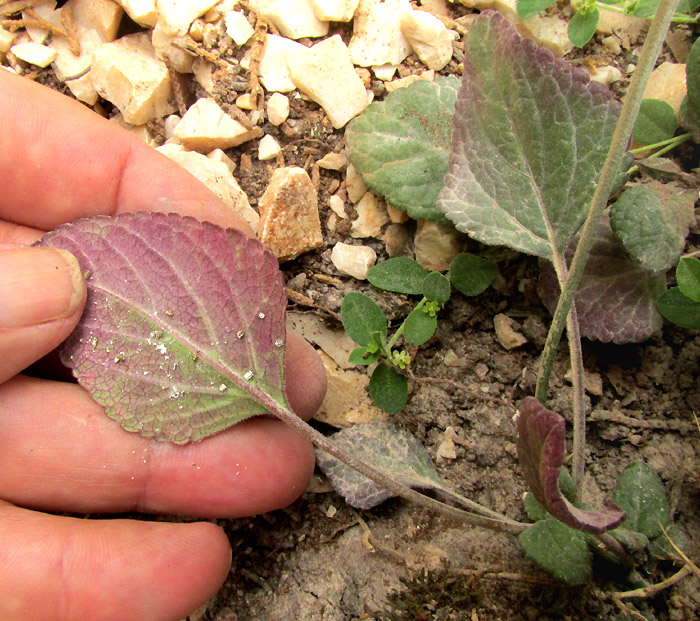Excerpts from Jim Conrad's
Naturalist Newsletter
Entry from field notes dated June 29, 2023, taken along one-lane gravel road in valley between Puerto del Zenthé and Chavarrías in mountainous area with a maze of roads too complex to say how to get there; in general it's in the mountains of east-central Querétaro state, municipality of Cadereyta de Montes, 12 straight-line kms due east of Vizarrón de Montes but much farther by twisting roads; juniper-scrub forest; limestone bedrock; elevation ~2860m (~9400 ft), Querétaro, MÉXICO, (N20.84122°, W99.60509°)
SALVIA HIRSUTA

On a small pile of mixed gravel and dirt looking like it had been dumped alongside the gravel road, the above sage was worth looking at. It was clearly a sage, genus Salvia, because of the flowers:

The corollas were strongly bilaterally symmetrical, with a distinct, broad, lower lip serving as a landing pad for pollinators. Not seen in the picture is that the flower produces only two stamens, which are modified in a manner shown and discussed on our Scarlet Sage page. Above, the blossom on the left has twisted in a way that we see its bottom lip from below, and that the lip's side lobes and margins curl downward and inward.
Over a thousand sage species are recognized worldwide. The 2011 work by Guadalupe Cornejo-Tenorio and Guillermo Ibarra-Manríquez entitled "Diversidad y distribución del género Salvia (Lamiaceae) en Michoacán, México" reports 64 native species just in the adjacent state of Michoacán, so here there's always a chance of meeting an especially interesting one.
Features distinguishing the species from one another often are subtle and not well documented, or understood. The above photos show important field marks needed for identifying our plants to species level. First, the corollas are blue and rather small. In the second picture above, note that the flowers are closely subtended by scoop-shaped modified leaves, or bracts, which are longer than the calyxes, rather broad, and diminish at their tips to long, sharp, slender points. The bracts are distinctly ribbed with veins, and bear long, white hairs; they're hirsute. Blossoms cluster at nodes atop their stalk, and within each cluster flowers arising all around the stalk (verticillate). These verticils, or whorls, are separated from another so that the stalk is visible between them. Lower down the stalk, where flowers already have been pollinated, the corollas have fallen off, and fruits are developing within the dried-up calyxes, the dried-up verticils are farther apart:

Note the stalk's dense covering of short, white hairs, and how it's deeply longitudinally grooved, or sulcate. These are important field marks, but none is more important than those long, sharp-pointed, and long-hairy bracts. For instance, already we've seen the Grape-scented Sage whose flowers and leaves are very similar. But on that species' page you can see that the bracts are very small.

The above picture and the image at this page's top made this identification hard, for they show a plant with few or no leaves on the flowering stalk, and all fully formed leaves appearing to arise from the ground-hugging stalk; the large leaves almost look as if they're issuing from stolons. But, I can't find a Salvia with the features noted above, and which is stoloniferous. Also, the lower leaves' petioles are too long to fit any taxa I can find.
However, discounting the ground-hugging and long petioles -- thinking these features may result from their gravel/dirt-heap habitat having been dumped there fairly recently, and by having been cropped by roving cattle, burros and sheep -- our plants fit fairly well into the concept of a commonly occurring species in central Mexico's uplands, SALVIA HIRSUTA, which has no English name.
Salvia hirsuta occurs mostly in disturbed sites, in high elevation, scrubby, grassy areas, so our plants' presence on a pile of mixed gravel and dirt is about right for it. The species is endemic just to central Mexico from Durango in the north south to Oaxaca.
Salvia hirsuta is featured on the Mexican Government's Weeds of Mexico website, where it's only impact and importance noted is that it turns up in corn fields. Other pages mention that livestock feed on it, and bees take nectar for making honey.
I personally admire the species' adaptability and vigor, enabling it to prosper on a piled-up heap of dirt and gravel, despite a host of animals eager to eat it. In the world that's coming, maybe this species will survive.